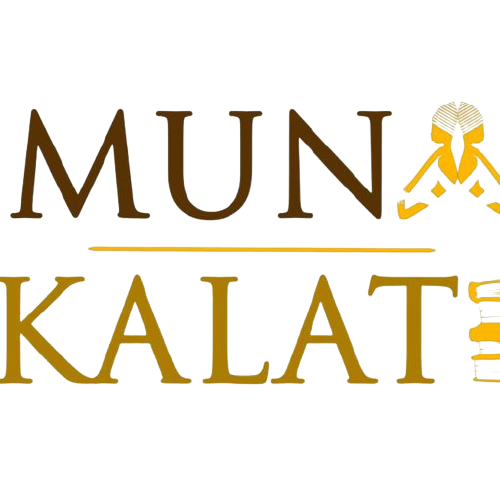Tales of El Hadji Leeboon is a book that brings together stories as rich as each other in life lessons. This work is the result of the collaboration of a storyteller by his artist name El Hadji Leeboon, and the illustrator Sophie Le Hire. This collection of text contains six (06) tales written with great simplicity, which makes the stories understandable at first contact. The particularity of these texts lies in the ability of the author to transport the reader on his imaginary journey. The more you turn the pages of the book, the more you almost feel like a full-fledged character; but also we discover different worlds when we go from one tale to another.Suddenly, this effect gives even more charm to this work so that, when you finish reading it, you want more… (at the same time, everything has an end).
However, before getting to the heart of the matter, let’s first take a look at the paratext in order to get a first idea of what the author has in store for us.
Commentary on the paratext
At first glance, we observe a predominance of the color green and its variants. This color evoking nature, seems to be chosen on purpose because, in the book, most of the scenes occur in the open air with the presence of animals such as we can see a sample of poultry on this frame. These poultry, let us notice, are placed on the branches of a tree whose leaves seem to be in full bloom; which branches hug the frame of the front cover. A little further down the branches, one can notice the face of a young boy, his gaze fixed on the sky, seeming to appreciate the marvel which is above his head. This strong presence of the color green could also testify to the author’s attachment to the protection of the environment, hence,the existence of a tale with a close link to this current issue. Following the analysis of the front cover, it is now possible to enter the universe of tales of El Hadji Leeboon .
Content Journey
The first tale is the story of a domestic dog ( Oze ) who meets a jackal following an escapade. Oze , driven by curiosity to discover new places other than his mistress’s home, takes advantage of the caretaker’s inattention to sneak out of the barrier. This getaway turned out to be an opportunity for Oze to confront his life with that of animals that can be called wild. In a discussion, in turn, the two characters define what freedom is according to their posture. for oze , it is the fact of having a mistress who takes care of him. As for the jackal, it is the fact of not belonging to anyone, of feeding according to his desires.Let us note at this level that, before their meeting, the two animals jointly complained about the life led by the other. As we can see, the conception of freedom of the two characters is different. Which of the two is right? it cannot be determined since it is everyone who constructs the semantic charge of their freedom. What we can also remember is that, if we transpose this situation to the education of children, it is important to give them enough freedom so that they can learn about other places and ensure easy adaptation. Because, the partitioning limits the domination of its space,
The second tale is that of Bardou and Bara , these two friends whose sincerity was known to all. Except that in reality, this sincerity was not the thing best shared by Bara who, on many occasions, had been disloyal. That had hardly prevented Bardou from considering her as his friend, his brother. This veil that he had placed over his eyes will soon fall when these two friends will decide to submit to the teachings of a wise man named Baye, who will end up unmasking Bara’s hypocrisy by using an exercise to verify the sincerity of the two friends. This exercise consisted in entering a box each with a bag in order to put objects there to offer to his friend. Bardou fills it with precious stones and bara in turn with pebbles.From there, Bara is unmasked. This story is a warning sound to vigilance, to mistrust. And we remember what founds friendship, it is actions and words. Which acts are the measure of the sincerity of a friendship. Bardou could have realized it since, given that Bara was not on his first try. Maybe he lacked courage?
The allusion to courage allows us to engage on the next story, the title of which is Samba and the caiman . This is the story of a brave little boy, Samba, who was to be given as a sacrifice with other children, to a caiman who lived in the village river, in exchange for rain. In order to put an end to the sacrifices perpetrated in his village, he ends up taking the life of this caiman which, according to the beliefs of this village, was holding back the rains. After the death of this caiman, there were abundant rains. This story highlights the bravery of a young Samba boy, who was able to positively change the course of things in his village. Samba in this sense, is a hero likely to inspire more than one, to make revolutionaries.Revolution or change does not always bring good as seen in Ker Yaadikkόon village.
Ker Yaadikkόon is a village that depended on a baobab tree. This tree was in a way the founding element of the village. Here lived a couple whose descendants did not last long. In order to dismiss fate, the inhabitants of this village addressed prayers to the baobab so that this couple could give birth. It was. So in order to dismiss fate, this couple decided to give the name of Yaadikkόon to their little girl who had managed to live longer than her brothers, and had reached adulthood. Unfortunately, his death warrant was signed when a stranger entered the village. He intended to introduce the young people of the village to football. According to him, to have more space, it was necessary to cut down the baobab.He managed to convince the young people of the village who ended up doing it, going against the disagreement of the elders and Yaadikkόon. Since this tree was at the origin of the formation of this village, putting an end to its life represented a calamity and would lead to a catastrophe: the complete destruction of Ker Yaadikkόon.
This story carries a strong moral which is that of the protection of nature and respect for the elders. This is all the more true since if the young people had honored the decision of the elders, they would not have found themselves in search of shelter. In reality, this baobab protected the village and provided shelter for its inhabitants. At this level, the author puts his finger on two values in the process of being lost with the advent of modernity. In this case, this tale is worthy of interest for the new generation so that it realizes that everyone is a part of nature, to destroy it is to put an end de facto to our existence. In another measure, listening to the advice of the elders is beneficial for the younger generation, which is why we need them to hold our hands. Didn’t Amadou Hampâté Bâ say on this subject “when an old man dies, a library burns down”? Among other values in perdition we mention the taste for work which is the moral of the following story:The King with the Silver Cane .
The King with the Silver Cane, is the story of a Senegalese king (Damel) who was renowned for the victories he accumulated on the battlefield. The secret to his victories lay in training and his silver cane. When he passed from life to death, his son took over, and inherited the attributes of power, including the silver cane. Notoriously lazy, he already considered himself victorious since he only had to make a wish with the cane for it to come true. Along the way, the deception was discovered when one of his adversaries, in collusion with one of his soldiers, stole his magic cane. At this moment, he amassed only failures, and shame. Its true value was on full display. By force of circumstances, he will end up recovering his cane with the help of his loyal soldiers, the only ones he has left. Buried by a reputation for being lazy and cowardly, he became the laughingstock of the whole country and he ended up formulating a wish to make everyone on the battlefield disappear, forgetting that he himself was among the men of this space. This is how he himself lost his life in the midst of other men who laughed at him. Nevertheless he had a survivor: the griot who was on the battlefield had been spared. This tale teaches us three things: Nevertheless he had a survivor: the griot who was on the battlefield had been spared. This tale teaches us three things: Nevertheless he had a survivor: the griot who was on the battlefield had been spared. This tale teaches us three things:
1- Nothing is acquired, it is only work that determines the value of everyone
2- The truth always ends up triumphing
3- The griot has a very important role in the transmission of wisdom to new generations through the popular imagination.
Of the same caliber as the previous one, Tuduma Lambaay the snake is a tale that carries just as many values.
Tuduma Lambaay the snake , is the story of a village that lived in terror because of a snake that kept stalking around its inhabitants. During a rally, he had slipped through the assistance which created a great carnage, and led to the pursuit of Tuduma Lambaaythe snake. Endowed with cunning, this one makes the proposal to a hunter, to hide in his belly and to come out once the danger has passed. Note that this hunter had been looking for game for many hours. This is how the hunter made a deal with the serpent. But once the danger was over, the snake refused to come out of the hunter’s belly. Worried for his life, the hunter began to lament. A heron perched on a tree heard him, offered to help him. Which he did by retrieving the serpent and consuming it. But, since the hunter had not been able to catch any game, he squeezed the heron with all his might by the legs in full flight, and brought it home for his wife to make a feast of it. The heron, holding on to life, began to tell his misadventure to the hunter’s wife. Finally he was released by her. But he did not fly away with his hands, or rather his beak free. He took his eye with him. This story reveals to us that we shouldn’t give our trust easily otherwise we risk being disappointed like all the characters in this tale. When you think about it, if the snake hadn’t tricked the old man, he would have kept his life. Also, if the old man hadn’t wanted to harm the life of the heron who saved his, his wife would never have lost her eye. Like what we sow what we reap. Bad deeds, like good ones, backfire. be disappointed like all the characters in this tale. When you think about it, if the snake hadn’t tricked the old man, he would have kept his life. Also, if the old man hadn’t wanted to harm the life of the heron who saved his, his wife would never have lost her eye. Like what we sow what we reap. Bad deeds, like good ones, backfire. be disappointed like all the characters in this tale. When you think about it, if the snake hadn’t tricked the old man, he would have kept his life. Also, if the old man hadn’t wanted to harm the life of the heron who saved his, his wife would never have lost his eye. Like what we sow what we reap. Bad deeds, like good ones, backfire.
All in all, we remember that The Tales of El Hadji Leeboon is a text that should be kept at your bedside regardless of age. We learn every day, don’t we say that? This work gives everyone the opportunity to better understand this school called life. For young readers, this book, full of wisdom, will give them the tools to succeed in life.



